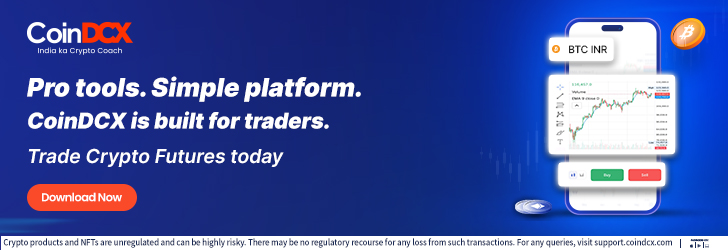An investment analyst got more views by fine‑tuning YouTube descriptions with the right industry keywords, richer overviews, and helpful timestamps—leading to both a bigger audience and stronger connections with finance fans.
Targeted Keywords Increase Video Discovery Among Financial Audiences
The first step for the analyst was fine-tuning keyword targeting. Many finance channels rely on broad, competitive terms such as “stocks” or “investing.” While those have high search volume, they rarely bring in the most relevant or action-ready viewers.
Instead, the analyst built a list of specific, lower-competition industry keywords. Examples included:
- “ESG investing strategies 2025”
- “emerging markets bond outlook”
- “pre-earnings stock analysis”
- “tech IPO valuation methods”
They pulled key terms from tools like Google Trends, YouTube’s autocomplete suggestions, and by watching competitor videos. Then, they naturally included one or two of these phrases right at the start of each description.
This placement is important—YouTube’s algorithm prioritizes keywords that appear early in the description, improving visibility for high‑intent searches on both YouTube and Google’s “Videos” tab.
The strategy also took viewer intent into account. Someone searching for “ESG portfolio diversification” is after detailed, useful guidance—not just surface‑level investing advice. Matching that with precise keywords meant more clicks and longer viewing.
Detailed Descriptions Enhance Search Relevance and Viewer Retention
Once the keywords were locked in, the analyst set out to upgrade thin one‑liners—like “Today we talk about market trends”—into fuller, more engaging summaries to draw in viewers and keep them watching.
The format was intentionally designed to please both the algorithm and human audiences. It opened with a keyword‑aligned introduction, then set the stage with market‑specific context, followed by a concise breakdown of each video section. A glossary made technical terms easy to understand, and the closing prompts encouraged viewers to like, comment, and subscribe.
By adding details like rate hikes, commodity trends, or quarterly results, the descriptions started reading like mini‑articles that backed up the video’s message.
These richer descriptions also aided retention: viewers who read them were better prepared for the topic, leading to fewer early drop‑offs and higher completion rates.
Use of Timestamped Links Improves User Navigation and Engagement
A key practical change was the addition of timestamps, effectively turning descriptions into interactive tables of contents.
Example from one “Global Market Outlook” video:
- 00:00 – Overview of Q3 global equity performance
- 01:45 – U.S. Federal Reserve policy review
- 04:20 – Eurozone GDP projections
- 07:15 – Equity sector winners and losers
- 09:40 – Final thoughts and portfolio positioning
This helped in two big ways:
- Easy navigation – Time‑pressed pros could jump right to the parts they cared about most.
- Algorithm love – YouTube and Google often pull these “key moments” into search previews, making clicks more likely.
The analyst noticed a 15% drop in average early abandonment rate after adding timestamps. Even better, once segment‑specific viewers found what they came for, they often kept watching other parts of the video.
Analytics Show Growth in Organic Traffic After Description Overhaul
Metrics from a 90-day post-implementation review told a clear story:
- Organic YouTube search traffic: up 35%
- Average watch time per video: up 22%
- Engagement rate (likes, comments, shares): up 18%
- Subscriber growth tied to search traffic: up 14%
Videos with richer descriptions performed consistently better than older uploads without the improvements. The positive changes also showed up in Google Search Console, where certain videos began ranking for industry search phrases that had never appeared in query reports before.
This was not a one-week spike—it sustained over the three months measured. The analyst credited this to maintaining description quality across every new upload and even retrofitting high-potential older videos with updated descriptions.
The analyst teamed up with Viral Promotions for a professional review, leveraging investor-focused YouTube description optimization to sharpen cross-promotion, consistent link formatting, and seasonal keyword integration.
Cross-Promotion Through Descriptions Expands Network Reach
Keywords and timestamps brought people in, but cross-promotion in descriptions kept them in the content ecosystem.
The analyst’s description also featured:
- Links to related playlists on topics such as ETF Strategies and Equity Sector Analysis
- A link to their personal finance blog with in‑depth data reports
- Cross‑links to trusted collaborator channels to support joint audience growth
- Social media handles for Twitter, LinkedIn, and Instagram to expand connection points
These links were placed after the main keyword-rich description and above the comment sections, ensuring they were seen without overshadowing the primary content.
Each link had a soft call to action—“Explore more ETF breakdowns here”—to guide viewers naturally rather than push aggressively. This drove additional sessions within the channel, raising the average views per visitor.
Importantly, branding and link names were consistent. This made the cross-promotional approach not only a traffic generator but a part of brand reinforcement.
Making the Description Box Work Harder for You
This investment analyst’s method shows that description optimization is not just about inserting a few keywords. It’s about building a complete, search-friendly and viewer-centric description that works as both a content summary and a navigation hub.
When keyword targeting works hand‑in‑hand with detailed explanations, timestamps, and cross‑promotion—and you do it consistently—you’ll see better discovery, longer watch times, and more chances to connect with your audience.
For finance content creators, this approach turns the description box from an afterthought into a strategic asset—capable of lifting both rankings and reputational authority in a competitive niche.
Frequently Asked Questions (FAQs)
1. Why should finance creators focus on keyword placement in descriptions?
Placing industry-specific keywords early enhances relevance in both YouTube and Google search results.
2. Do timestamps make a difference for your SEO efforts?
Yes. They add structure, make videos user-friendly, and can appear as rich key moments in search.
3. Is cross-promotion inside descriptions worth the space?
Definitely — it keeps viewers engaged within your content ecosystem, boosting average watch time and reinforcing brand recognition.






